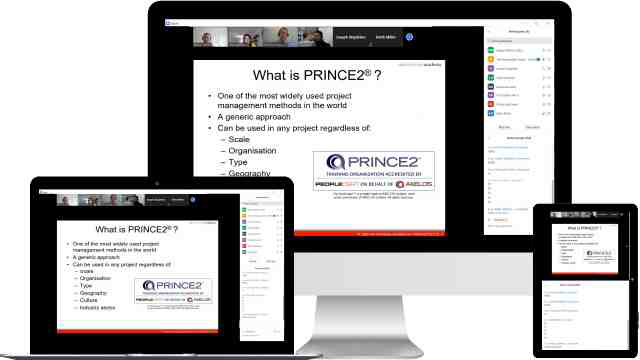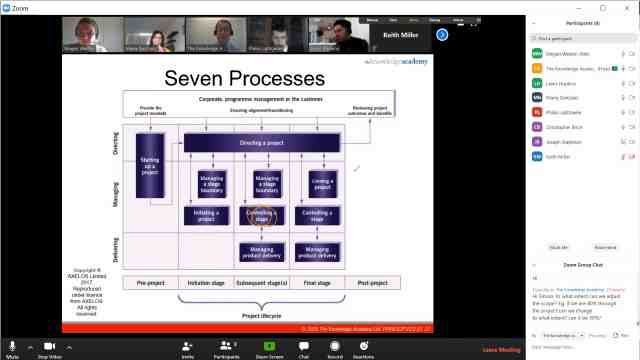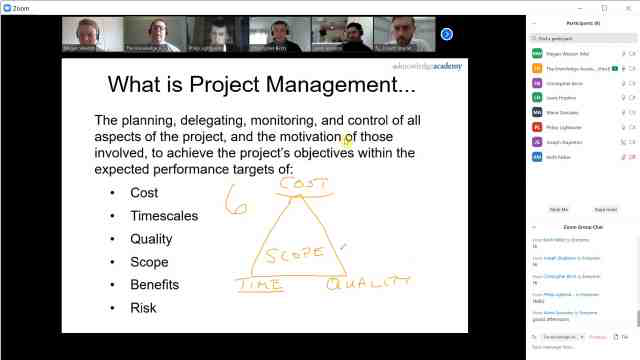ITIL® 4 Specialist Acquiring and Managing Cloud Services ITIL® AMCS Course Outline
Unit 1: Understand the Role of Cloud Services in an Organisation
Module 1: Describe the Characteristics of the Cloud
Module 2: Describe the Approaches to Cloud Adoption
- Approaches to Migrating Existing Services
- One-Off Migrations
- Evolutionary Migrations
- Big-Bang Migrations
Module 3: Cloud Deployment Models and Cloud Service Models
- Types of Cloud Solution
- Cloud Service Models
- Standard and Non-Standard Services
- Deployment Models
Unit 2: Know How to Define an Organisation’s Requirements for Adopting, and Readiness to Adopt, Cloud Solutions
Module 4: Describe the Structure and Content of a Business Case for Cloud
Module 5: Know How to Define Organisation’s Requirements for Cloud Solutions
- Defining Requirements for Cloud Services
- Impact of Cloud Services on Existing Customers
- Typical Requirements
Module 6: Carry Out an Organisational Readiness Assessment for Cloud Adoption
- Conducting a Cloud Readiness Assessment
- Steps in Conducting a Cloud Readiness Assessment
- Define the Assessment Scope
- Assess Current Resources
- Specify the Desired Scope of Cloud Services
- Assess Operational Readiness
- Produce an Assessment Report
Module 7: Know How to Communicate a Cloud Business Case
- Communicating a Business Case
Unit 3: Identify the Types of Cloud Services and Understand Their Applicability to an Organisation's Context
Module 8: Describe the Types of Cloud Service Providers
- Conducting a Cloud Readiness Assessment
Module 9: Describe the Key Elements of a Cloud Strategy for a Service Consumer
- Formulating the Cloud Strategy
Module 10: Identify the Available Services that are Relevant to the Organisation’s Context
- Researching What Services are Available
- Understanding the CSP Landscape
Unit 4: Understand How Cloud Services are Selected and Procured in the ‘Offer’ Step of the Customer Journey
Module 11: Describe the Costs of Using Cloud Services
- Costs
- Exploring Cloud Services
- Onboarding and Offboarding
- Co-Creation
- Under- and Over-Utilisation
- Outages
Module 12: Describe the Benefits and Opportunities Created by Cloud Services
- Deciding to Use Cloud Services
- Benefits and Disbenefits of Using Cloud Services
Module 13: Describe the Key Risks and Disbenefits of Using Cloud Services
- Risks
- Shifts in Roles and Responsibilities
- Unauthorised Procurement of Cloud Services
- Security of Cloud Services
- API Vulnerability
- Maintaining Separation Between Tenants
- Vendor Lock-in
- Third-Party Contracting
- Migration
Module 14: Describe Security and Compliance Considerations of Using Cloud Services
- Security and Compliance Considerations
- Visibility
- Compliance
- Automation
- Conflict Between Development and Security Priorities
- Hybrid IT
- Role of Service Level Agreements with Onboarded Cloud Services
Module 15: Describe the Inputs and Outputs of a Return on Investment (ROI) for Cloud
- Return on Investment Process
- Define the Purpose, Objectives, and Scope of the Assessment
- Collect Data
- Review and Analyse the Data
- Calculate and Report
- Decide
Unit 5: Know How to Onboard and Offboard Cloud Services
Module 16: Describe the Key Approaches for Migrating to or from the Cloud
- Moving from In-House to Cloud Solutions
- Migrating from One Cloud Service Provider to Another
- Migrating Away from the Cloud
Module 17: Carry Out the Activities of Onboarding/Offboarding Cloud Services
- About the Onboard Step: General Considerations
Module 18: Know How to Modify an Operating Model to Support Migration to Cloud Services
- What Happens to an Operating Model When Moving to the Cloud?
Unit 6: How to Manage the Use of Cloud Services
Module 19: Shared Responsibility Model
- Shared Responsibility Model
Module 20: How to Measure the Quality of Consumed Cloud Services
- Managing Cloud Service Quality
Module 21: Describe the Tools, Techniques, Methods, and Controls Used to Manage the Use of Cloud Services
- Managing the Optimisation of Cloud Service Consumption
Unit 7: Know How to Evaluate and Improve a Cloud Strategy
Module 22: Adjustments for a Cloud Strategy to Respond to VUCA Challenges
- VUCA and the Value Co-Creation Map
Module 23: Apply the Continual Improvement Model to an Organisation’s Cloud Strategy
- Continual Improvement and the Value Co-Creation Map for Cloud










































 Back to course information
Back to course information




 If you wish to make any changes to your course, please
If you wish to make any changes to your course, please

